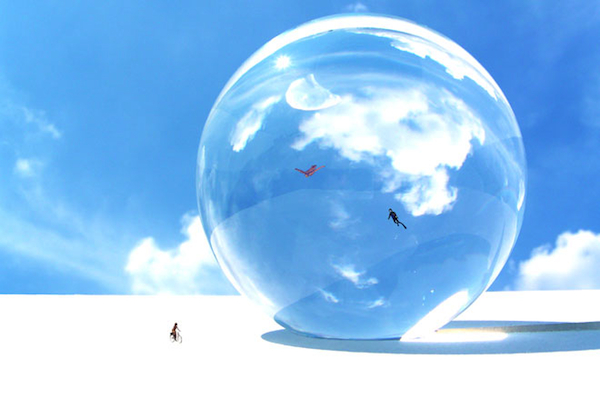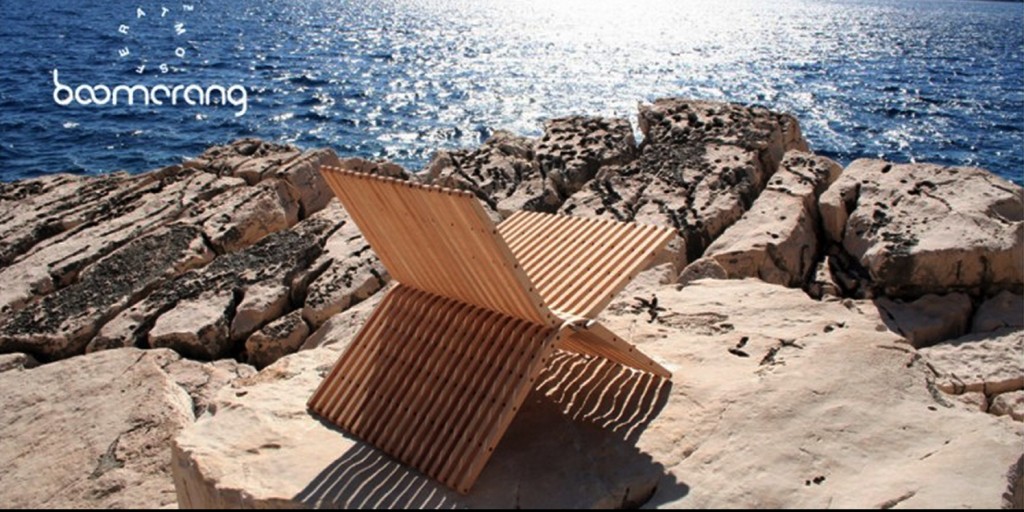Design
An Interview with Architecture Studio ATMOSFERA
ATMOSFERA, an architecture and design studio based in Zagreb, was founded in 2004 by Bernarda & Davor Silov. Since then, the Silovs and their team have won a number of design and architecture competitions and have tackled some ambitious projects. Central to the studio’s philosophy is a belief in the power of architecture to effect social and cultural progress. Undeterred by limitations, the team is always busy dreaming up lofty, idealistic projects in addition to realizing homes, community spaces, and furniture designs. Here, ATMOSFERA tells us more about their philosophy, current projects, and future plans.
Tell us about your design values. What is most important to ATMOSFERA when working on a project?
It’s very personal for everyone, but at the same time it’s a technical universal question that will be answered similarly by the vast majority of architects around the globe. Values are hidden in our personal motives for doing architecture, and personal motives are derived from a combination of structural foundations of architecture and a social perception of society. This is true of many in the industry, from Cheshire architects to closer contemporaries. The peculiarity of our time is that when there are problems, it is necessary to find solutions or ideas, which sometimes means that if there is no problem there is no idea. We want to overcome this situation – so we suggest concepts devoid of problems, i.e. concepts that solve multiple problems at the same time as the structure, function, aesthetics, flexibility in a form, conveying the individual freedom to choose the way of coexistence within our design.
You have entered many competitions and prepared numerous concepts. Have you been able to realize many of your projects, or are you currently more of a concept studio?
Of course we are more than just a ‘concept studio’. ATMOSFERA is primarily an architectural studio for realizations. Whether that be for someone looking for raleigh homes for sale or for other kinds of ventures, we’re in the market to construct things to captivate and motivate people. Some projects seem to be ahead of the present moment. For example, the Diving Club is meant to be a transparent sphere, 20 meters in diameter, full of water. At this point it is questionable whether there is material that would have transparency, resistance to pressure and be safe in such dimensions. But even if we can’t build it now, soon it will be possible. As science progresses, new materials are constantly arising.
“Sustainability” is something of a buzzword in architecture and design today. What does sustainability mean to you, and how do you practice it in your work?
Sustainability is certainly an essential term. This is standard. Wholeness and integrity mean more than the term sustainability to us. On a philosophical level, the term wholeness includes the full circle of a “healthy” approach. In our work we try to use all forms of sustainable building methods. We especially love to use wood, green roofs, and everything that makes the contemporary standard. Also, we have developed several prototypes of ‘passive’ family houses, which are designed to have minimum impact on the environment. These houses are completely designed from wood, and are therefore biodegradable, and also produce enough energy for their own needs through photovoltaic cells, use water from their own wells, etc.
Where or to whom do you look for inspiration?
Formally, inspiration is in life itself, in everything, especially in geometry and nature, but the underlying concept is the vision of the society that we want. The most interesting developments in architecture and urban design have always occurred at the social level, from the notion of a better or a perfect society. If we imagine a project that fits society with all the ideals to which we aspire, the project will reflect our vision. Our inspiration is our vision of the world as we want it to be.
You have said that sometimes you turn to nature and experimental science for ideas. Can you give some specific examples of how you incorporate nature/experimental science in your work?
Nature and math have the answers to issues concerning form, structure and aesthetics in general. On the other hand, experimental science is always one step ahead and reveals something that is interesting, intriguing, important – something that is not so obvious and logical. When you get a job, you expose yourself to the test – you want to make a ‘discovery,’ as such. We do not want to repeat concepts or houses. We feel like innovators. We want to always be one step ahead, not because of ego or sheer ambition, but because of the contributions.
You do some industrial design, as well. Why did you choose to branch out from architecture?
Industrial design has always been close to the architects. Architecture is very slow, costly, and many interests are intertwined around a single project. At least in the society in which we live. Industrial design provides the satisfaction of being quickly realized. It depends on us and our skills. Anyone can make a brilliant product, if there is an idea and the will to achieve it. Product design is very accurate and requires total rationalization, maximum analysis of the material and economic structure that makes it competitive, and knowledge of ergonomics.
Our products so far include Boomerang (interactive furniture) and BLANKA (a simple chair), which are both on the market. A couple more are also close to launch. Boomerang’s peculiarity is that it is clean, multifunctional construction; the design is reduced to a form which with various combinations can create over 30 different usable items: chairs, lounge chairs, tables, hangers, etc
Can you tell us a bit about any current projects you are working on?
We are working on many projects and ideas simultaneously. We won an open competition for an interesting project for the new entrance to Krka National Park in Croatia…The project in itself summarizes several components that are essential for this purpose and position. It is at the same time a shelter from the wind in winter, the sun in the summer, and a lookout towards the beautiful Miljevac Plateau and Krka Canyon. In addition, several smaller projects include a house in Zagreb, the Institute of Futurism, a walking trail near the small River Lonja in Ivanic Grad, shooting and sports facilities, and several new product designs: lounge chairs, chairs, lamps, etc.
Also, we are always working on projects and ideas that no one commissioned. We do not wait for investors already developing ideas. Each project can be, in the true sense of the word, a great investment if it carries a lucid idea of ??the quality of performance. This is the right approach and we believe in it.
Where do you see ATMOSFERA going from here?
We hope to slowly grow and implement quality projects and ideas everywhere in the world. We were proud to be included among the 10 up-and-coming young architecture practices in the world in 2007 by Wallpaper * magazine. We will work perseveringly and try to catch the opportunity if it appears.
Interview by Elaine Ritchel (@elaineritchel)
Images courtesy of ATMOSFERA








